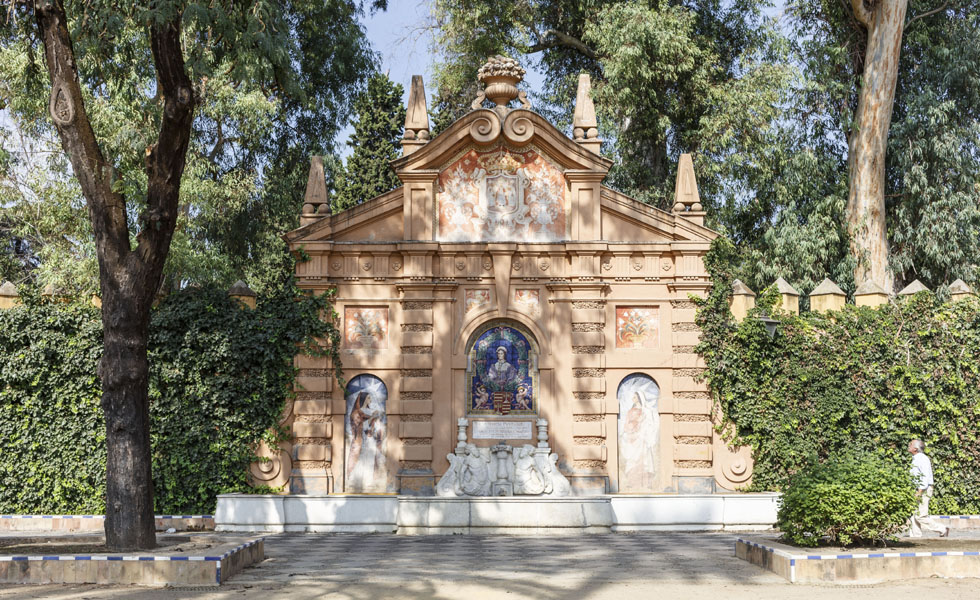
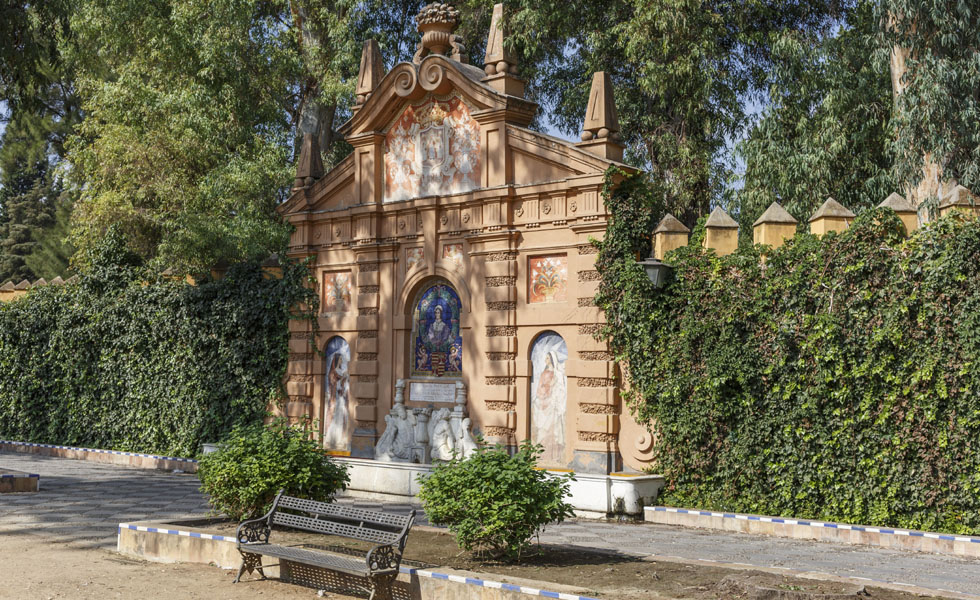
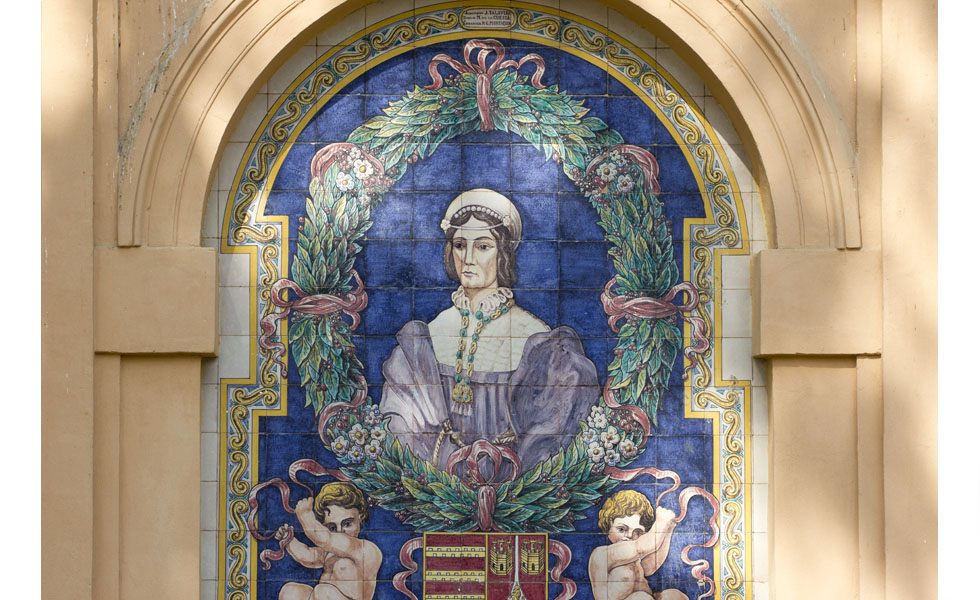
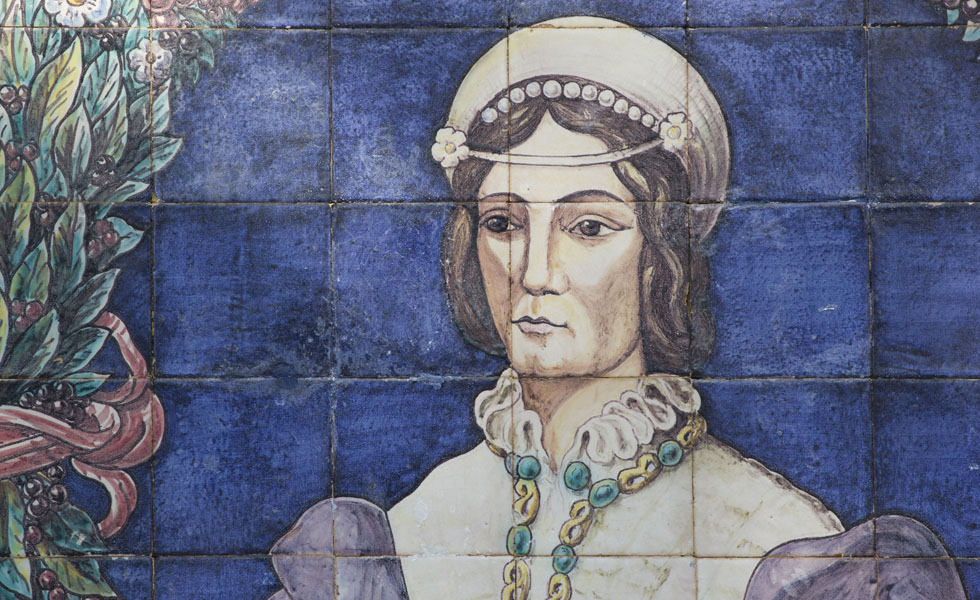
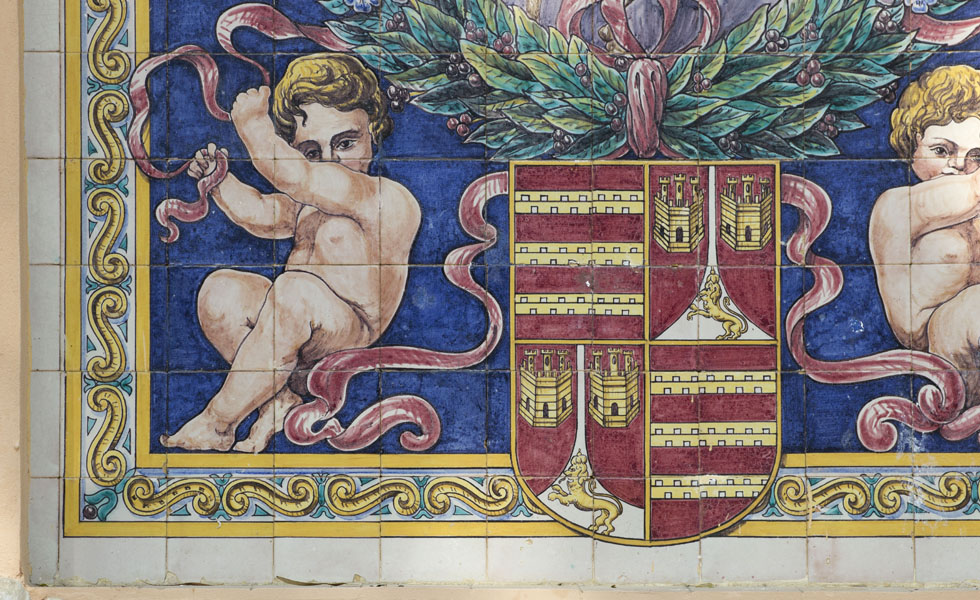
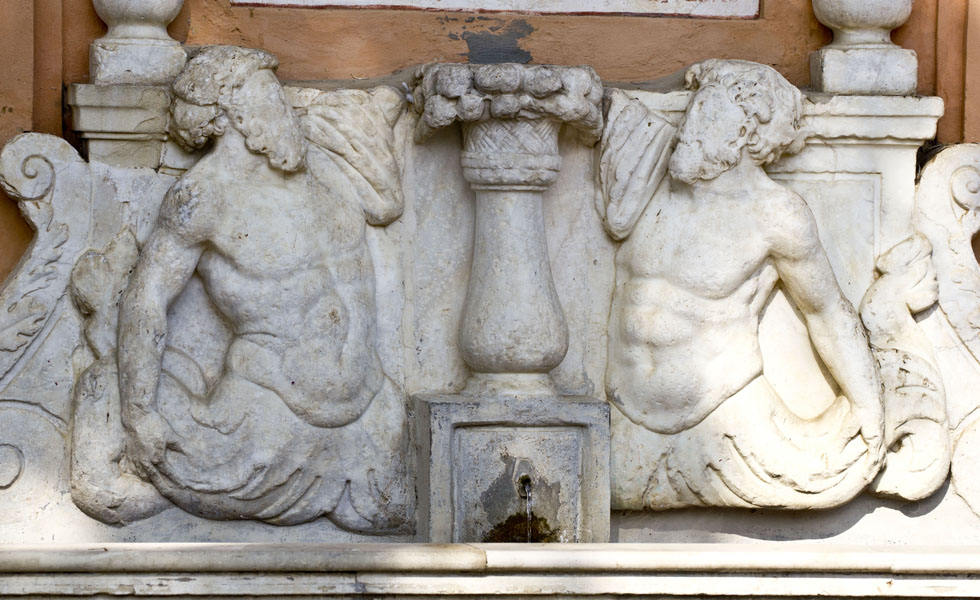
Autor
Juan Talavera y Heredia
Época
1921
Propiedad
Publico
Descripción
Fuente adosada a la muralla de los jardines del Real Alcázar. Está compuesta por un frontal arquitectónico de carácter barroco compuesto por dos cuerpos y dividido en tres tramos. El central está ocupado por el retrato de Catalina de Ribera realizado en cerámica vidriada. A ambos lados se disponen dos pinturas alegóricas de Francisco Maireles, sobre las que se sitúan otras pinturas que representan motivos florales. Cabe destacar el frontis de mármol procedente del Palacio de los Marqueses de Pumarejo. Finalmente el agua queda recogida en una alberca dividida en tres tramos.
Datos históricos
En 1921 se acuerda la creación de una fuente dedicada a Catalina de Ribera, fundadora del Hospital de las Cinco Llagas, que se adosaría en el muro de los Jardines del Alcázar. Juan Talavera decidió emplear para ello parte de una antigua fuente del siglo XVI que ocupó el centro de la Plaza del Pumarejo durante el siglo XVIII. Hasta 1965 la fuente estaba ornamentada por pinturas de Manuel Cuesta que se perdieron. Fue entonces cuando se colocaron el retrato de la homenajeada en cerámica y se realizaron las pinturas laterales por parte de Francisco Maireles.
Descripción del Entorno
Se encuentra en el Paseo Catalina de Ribera, una de las zonas ajardinadas de mayor interés histórico, artístico, paisajístico y medioambiental de Sevilla. Esta zona se formó con los terrenos de la Huerta del Retiro, que eran propiedad del Alcázar y fueron cedidos en 1848 por Patrimonio Real al Ayuntamiento de la ciudad, construyéndose el muro almenado que hoy conserva en 1863. El aspecto que hoy conserva es fruto de las reformas llevadas a cabo en el espacio entre 1917 y 1921. Bordea las murallas exteriores del Alcázar sevillano por la Avenida. De Menéndez Pelayo, desde la Universidad, antigua Fabrica de Tabacos, hasta los Jardines de Murillo, convirtiéndose en una de las entradas al Barrio de Santa Cruz.
Valoración Patrimonial
Destaca por su carácter conmemorativo, homenajeando a una de las figuras históricas de la ciudad. Su diseño corresponde a Juan Talavera y Heredia, siendo prototipo del conjunto escultórico y ornamental creado en Sevilla durante las primeras décadas del siglo XX. Está dentro del Paseo de Catalina de Ribera, declarado BIC con categoría de Jardín Histórico en 2002.